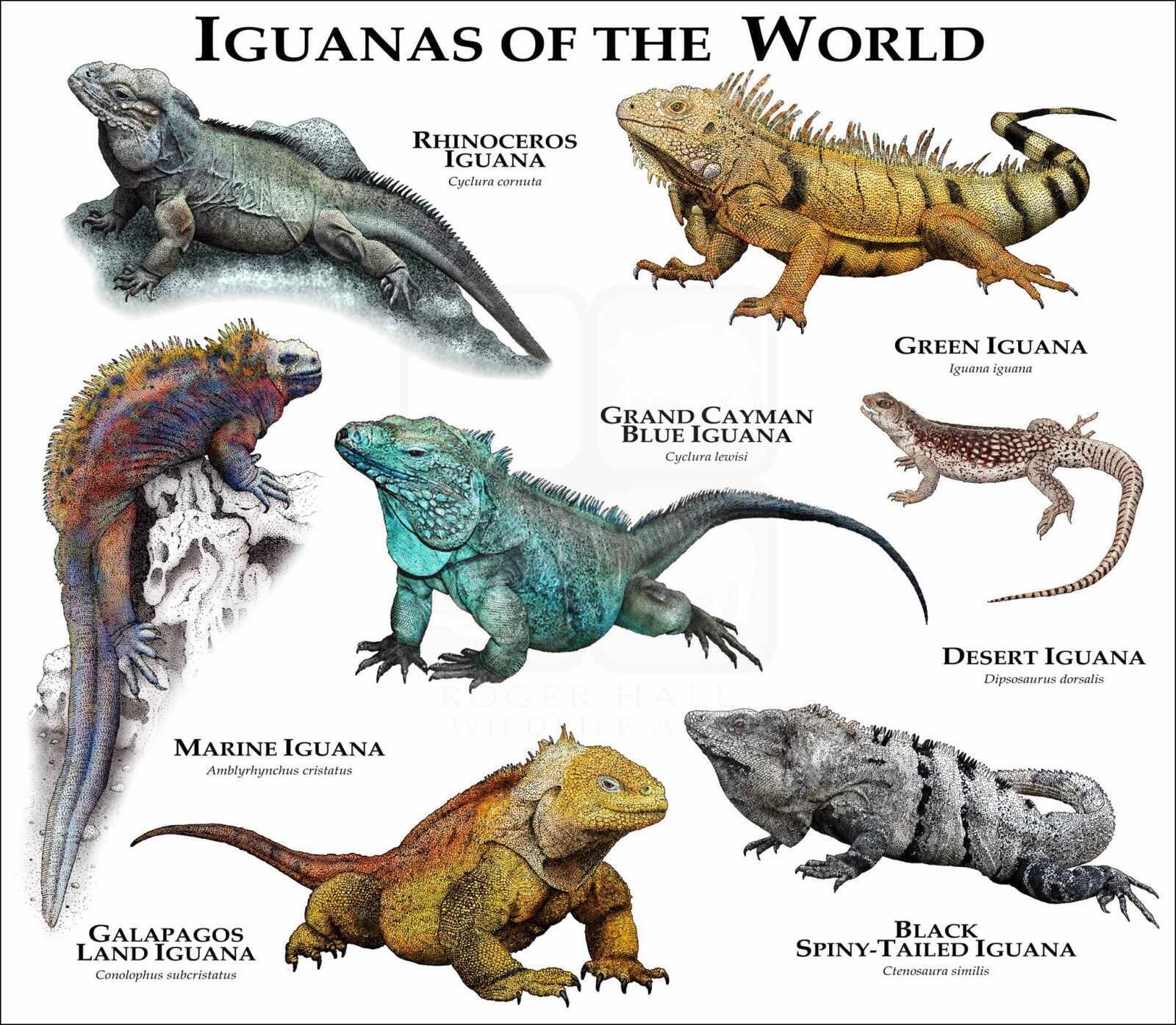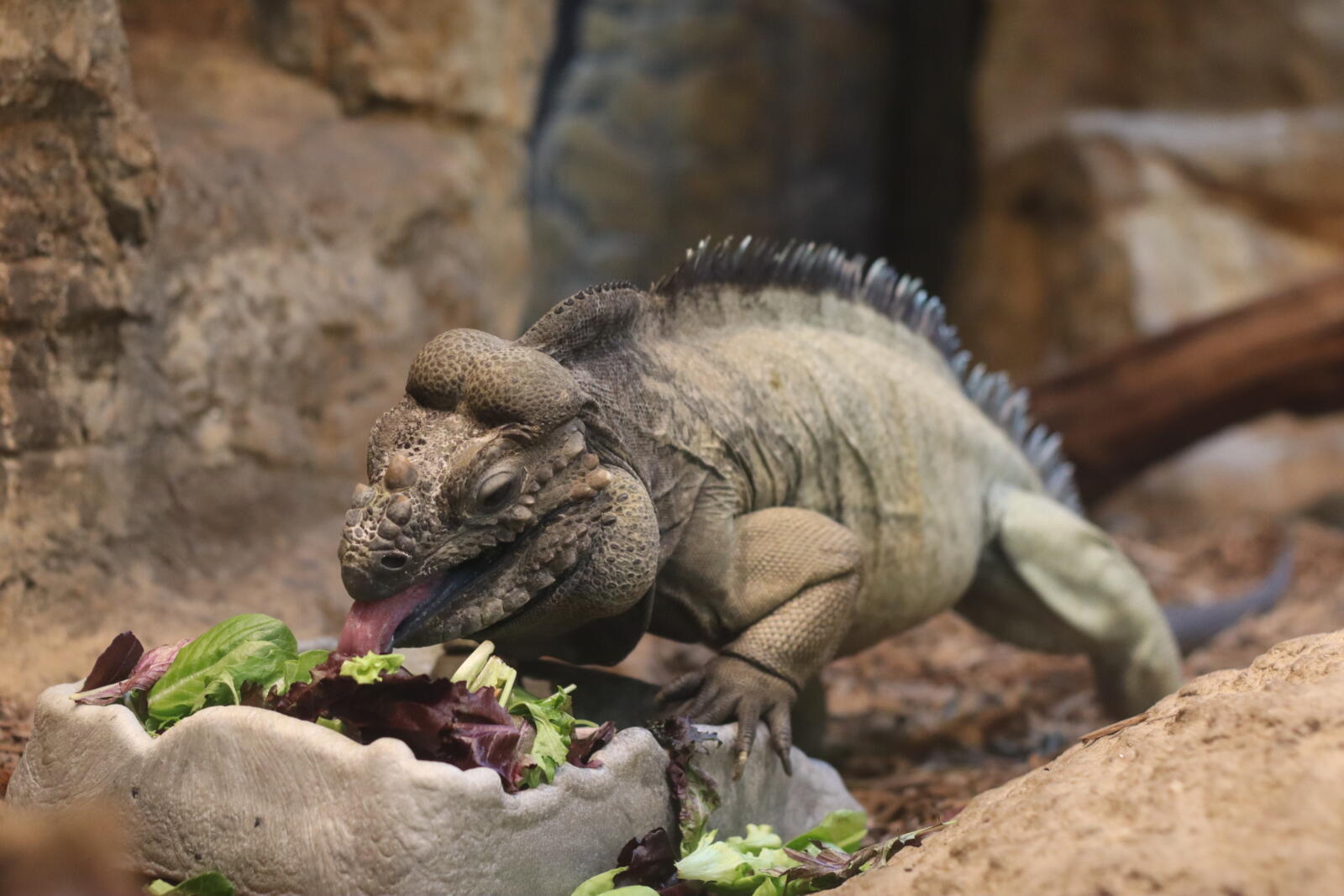Rhinoceros Iguana
Did you know...
there are 45 different species of iguanas. Different iguana species look and act differently.


Rhinoceros iguanas, or rhino iguanas, get their name from the horn-like structures on the top of the male iguanas snout.
Rhino iguanas are solitary creatures that are active during the day. They live primarily in rocky outcroppings with little vegetation for cover where they spend their days warming in the sun perfectly blending into their environment. At night they retreat into caves or hollow rock areas where they can sleep. Although quick to flee when attacked or threatened, rhino iguanas can aggressively attack, biting and repeatedly striking with their thick tail if cornered. They can also raise and lower the spines on their back to appear more threatening.
Rhino iguanas are primarily herbivores, consuming leaves, flowers, berries, seeds, and fruits from different plant species. However, they will also eat small lizards, snakes, insects, and even carrion.

________________________________________________________________________________________________________________________________
Species Survival Plan for Rhino Iguanas

Zoos and conservation organizations have strict breeding protocols for rhino iguanas. Genetic data is closely tracked and pairings are made to keep bloodlines as pure and unrelated as possible. Chattanooga Zoo participates in the Species Survival Plan (SSP) for this endangered species in an effort to keep it from becoming extinct in the wild. By supporting and visiting the Zoo, you are our partner in saving this species in the wild.
_______________________________________________________________________________________
In the wild
Rhino iguanas are threatened by habitat loss due to deforestation, hurricanes, and human clearing practices. Because their populations are restricted to islands, rhino iguanas are especially vulnerable to environmental as well as manmade disturbances. Predation by snakes and feral animals, such as mongooses, pigs, or cats also pose a serious threat to these endangered reptiles.
Rhino iguanas play an important role in distributing seeds to new areas, particularly when females migrate to nesting sites. As the largest native herbivores (mostly) in their island's ecosystem, they are essential for maintaining the balance between climate and vegetation.

.
.







